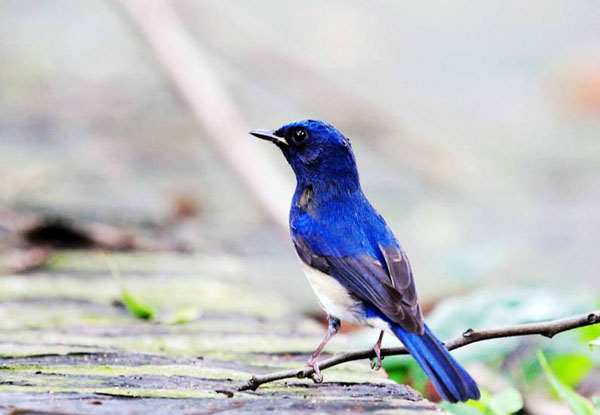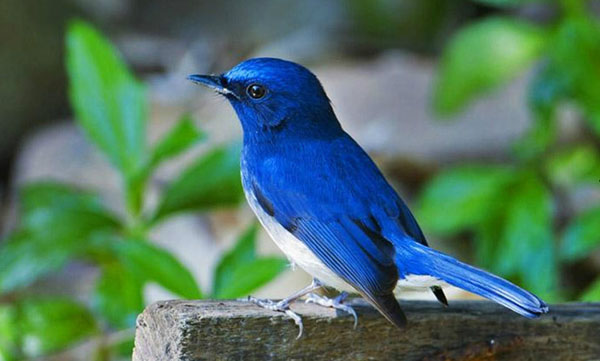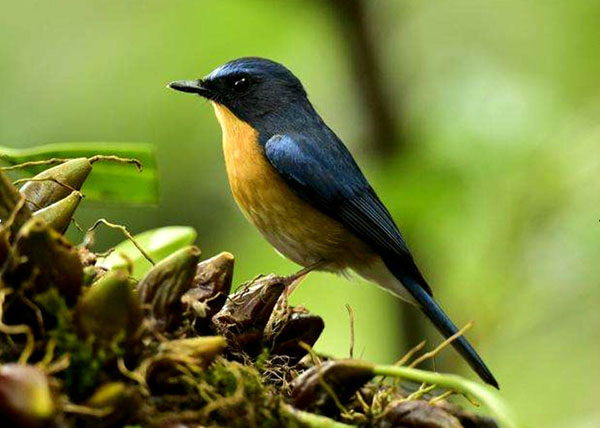Ficedula hodgsoni
IUCN
LCBasic Information
Scientific classification
- name:Ficedula hodgsoni
- Scientific Name:Dwarf Blue Flycatcher, White-browed Ochre-breasted Flycatcher, White-browed Purple Sand Flycatcher, Flycatcher, Wheat Flycatcher
- Outline:Songbird
- Family:Passeriformes Muscicapidae Ficedula
Vital signs
- length:100-110mm
- Weight:48-70g
- lifetime:9-11year
Feature
A fairy flycatcher with a very small body and narrow beak.
Distribution and Habitat
Distributed in Bhutan, China, India, Indonesia, Lao People's Democratic Republic, Malaysia, Myanmar, Nepal, Thailand, Vietnam.
It mainly inhabits evergreen broad-leaved forests at an altitude of 900-2500 meters. In the non-breeding season, it is active at the foot of low mountains, especially in low trees and bushes near rocks by streams and cultivated land at the edge of forests. It also goes down to the foot of mountains in winter.
Appearance
The base of the forehead, front of the eye and the sides of the head of the male bird are black with blue, the forehead and the front of the head are azure blue, the back of the head and the entire upper body are dark blue, the wings and tail are black, and the feather edges are dark blue. The entire lower body is light orange-yellow or light yellow-brown, and the middle of the abdomen is white or almost white.
The upper body of the female bird is olive brown, the lower back, waist and undertail coverts are brown-brown, the tail and wings are brown, and the feather edges are brown-brown. The front of the eye and cheeks are tea yellow and mixed brown. The lower body is light brown and yellowish, and the middle of the abdomen, around the anus and undertail coverts turn white and become white or nearly white.
Details
The body of the Dwarf Blue Flycatcher is very small, about 10 cm; the beak is narrow, obviously narrower than other flycatchers. It can reach an altitude of 3,000 meters. It likes to live in the lower branches and leaves of trees in primeval forests and other places, occasionally foraging on the ground, and rarely playing in the middle and top layers of trees. When playing, it often likes to spread its wings and raise its tail to express "happiness".

Resident bird. Often active alone or in pairs, occasionally seen in small groups of 3-5. They often forage between the branches and leaves of undergrowth, frequently jumping between the branches and leaves of shrubs or dwarf trees, and often forage in the undergrowth or on the ground or fly into the air to catch flying insects. They are quiet. Their chirping sounds like "do, do, si, la, si", with a high and sharp tone.

They mainly feed on insects and larvae of Coleoptera, Lepidoptera, Orthoptera, such as caterpillars and grasshoppers, as well as other invertebrate foods such as locusts, beetles, spiders, and grass seeds, young leaves of plants, and fruits.

The breeding season is from May to July. Once the breeding season arrives, the male bird begins to sing, with a low, weak and sweet voice. At the same time, it also performs a peculiar courtship display flight. The male bird flies from the perch to the air, then flies back to the perch, and loosens the feathers on the body. Usually nests are built on the ground in the bushes and grass on the shore, and some nests are built on the bushes and grass not high from the ground. The nest is spherical, mainly composed of grass leaves, bamboo leaves, grass stems, etc., and the inner layer is mostly thin grass stems. Each nest contains 3-4 eggs, which are white, smooth and spotless. The eggs are oval in shape and measure 19.3 mm x 13.4 mm.








